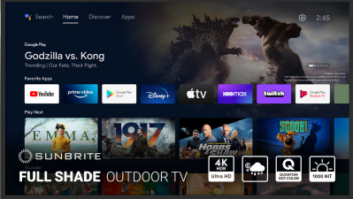It’s two months since International CES, where Panasonic, as well as several other companies, previewed work in the development of 3-D home entertainment. And those showings have people across several industries still talking about 3-D.
According to the The 3-D Movies Database, the peak year for 3-D movies was 1953, when 29 3-D films were released. But in just one year, the number of 3-D films quickly fell to 19 and then down to just two by 1955. 3-D was not the hoped-for, next-generation of entertainment after all. Because of technological and other limitations, it proved to be a novelty that wore off quickly and it would not be revived for over 50 years. But what a revival! It’s now expected that nearly 30 3-D movies will be released in 2010.
Just a couple weeks ago, fans gathered in their homes to watch the Super Bowl and many tuned in specifically to see the commercials. In keeping with the buzz coming out of CES, some of those commercials were televised in 3-D. There was plenty of anticipation, but judging from blog postings and other online sites, the results did not match the anticipation. When asked by an online poll at the CrunchGear.com if the 3-D commercials were “Hot or Not,” by a 2-to-1 ratio, the response was “Not.” On FirstShowing.net, Alex Billington made the following succinct, albeit blunt, evaluation: “Sorry DreamWorks, But Your 3-D Super Bowl Trailer Sucked!”
I asked Eisuke Tsuyuzaki, the managing director of Panasonic’s Hollywood Lab — where Panasonic is busy setting up the first 3-D FullHD (1080p) Blu-ray Disc Authoring Center — why he felt that these consumer responses were not evidence that our generation was about to repeat the failed attempt at 3-D technology of the 1950s. In addition to knowing 3-D technology inside out, Eisuke really understands Hollywood. Here’s what he had to say:
“The Super Bowl commercials were limited by the technology of today’s television systems. A lot has changed since 1953 but those technology advances are not yet available in TV broadcasting. Today, though, high-definition digital production and display technologies have the inherent power to enable the kind of 3-D imagery that cinematographers could only have dreamed about in the 1950s. But we should not fall victim to the temptation to take shortcuts by using technologies such as anaglyph, which while able to achieve some level of 3-D effect, would undercut the real, full power of 3-D — the onscreen version of exactly what you would see if you were in movie, game or program. It would be a short-sighted effort (pun intended!) to rush to market a form of 3-D that is confined by the limitations of today’s home entertainment technologies.”
Instead, Eisuke believes all stakeholders — consumer electronics companies, motion picture studios, broadcasters, as well as the video game industry — can, and should, work together to create extensions of today’s Blu-ray technology standards, including those for video compression (note: the H.264 MVC standard for 3-D is essentially complete) and HDMI to quickly bring 3-D to home entertainment. By doing so, a powerful, uncompromised, FullHD 1080p, 3-D experience will be available to consumers right in their living rooms.
Eisuke also pointed out that it is not necessary to wait for the development of holographic (or near-holographic) systems. Instead, he has faith that development of lightweight glasses — like comfortable regular eyeglasses — will prove to be an acceptable solution for Blu-ray consumers. I might note that as a person who has worn glasses virtually my entire life, I find this proposition quite reasonable.
As in 1953, consumers are responding well to 3-D theatrical releases. It is regularly reported that 3-D theaters are achieving box office revenues of three to four times those of non-3-D showings. But, if 3-D is to avoid the same fate that it experienced 50 years ago, most important will be the creation by the content industry of titles in which 3-D in not a tiresome, and eye-tiring special effect, but instead makes the experience come alive. When 3-D FullHD is used to truly enhance the experience, as opposed to being the experience, we can expect success of 3-D theatrical showings to quickly lead to a successful 3-D Blu-ray market for home 3-D video. The success of 3-D Blu-ray will then set the stage for 3-D television programming.
I think that Eisuke is correct. As we at Panasonic like to say, today consumers are stepping up to HD, but they should soon be able to step into 3-D. 3-D is about the experience and not the other way around. If we keep that mantra in mind, there can be no doubt that 3-D will be the next generation of home video entertainment that can help us to grow this industry, and not just a passing fad.












